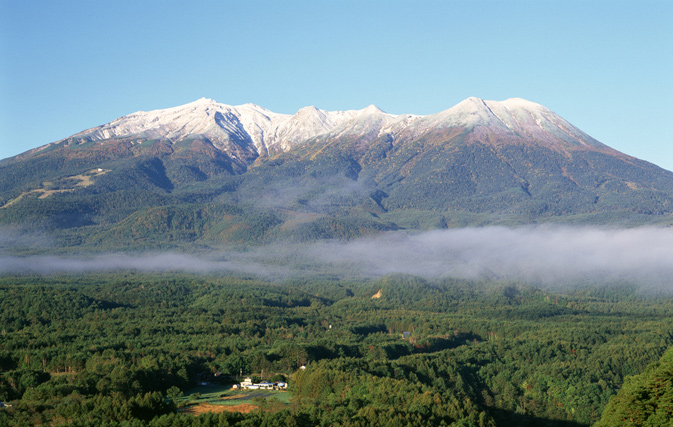TOKYO — Finally reaching the ash-covered summit of a still-erupting volcano in central Japan, rescue workers made a grim discovery Sunday: 31 apparently dead people, some reportedly buried in knee-deep ash.
Four bodies were brought down and confirmed dead Sunday afternoon, one day after Mount Ontake’s big initial eruption, said Takehiko Furukoshi, a Nagano prefecture crisis management official. The other 27 were listed as having heart and lung failure, the customary way for Japanese authorities to describe a body until police doctors can examine it.
Officials provided no details on how they may have died. Japanese media reported that some of the bodies were found in a mountain lodge near the summit, and that others were buried in ash up to 50 centimetres (20 inches) deep.
Most of the 31 people were found near the mountain’s summit, where there was a lot of ash fall, said a Kiso city fire department official who spoke on condition of anonymity because he was not authorized to talk to the media.
Police said only two of the four dead had been identified so far. Both were men, ages 23 and 45.
Mount Ontake erupted shortly before noon Saturday, spewing large white plumes of gas and ash high into the sky and blanketing the surrounding area in ash. The mountain is a popular climbing destination, and at least 250 people were initially trapped on the slopes, though most made their way down by Saturday night.
An estimated 40 people, possibly more, who were stranded on the mountain overnight came down on Sunday. Many were injured, and some had to be rescued by helicopters or carried down on stretchers. By nightfall, all the injured had been brought down, officials said.
Japan’s Fire and Disaster Management Agency tallied 37 injured people, and said it was trying to update the number still missing.
Furukoshi said rescuers gave priority to helping the survivors come down, leaving behind those who were obviously without hope.
Survivors told Japanese media that they were pelted by rocks. One woman said she covered her head with a knapsack, and later found a thermos inside had been flattened.
A man said he and others went into the basement of a lodge, fearing that the rocks would penetrate the roof. He covered himself with a futon, a thin Japanese mattress, for protection.
Mount Ontake erupted at perhaps the worst possible time, with at least 250 people taking advantage of a beautiful fall Saturday to go for a hike.
“Even small eruptions can cause major damage if people are around, as they get hit by rocks that come flying,” Nagoya University volcanologist Koshun Yamaoka said at a news conference Sunday. “And the problem is that catching signs of such small eruptions is difficult.”
Military helicopters plucked seven people off the mountainside earlier Sunday in three helicopter trips, said Defence Ministry official Toshihiko Muraki. All were conscious and could walk, though details of their conditions were unclear, he said.
Japanese television footage showed a soldier descending from a large camouflage-colored helicopter, helping latch on a man and then the two of them being pulled up. The helicopters hovered over ash-covered mountain lodges and vast landscapes that looked a barren grey, like the moon’s surface.
At least one woman was carried down on a stretcher, and a man with a broken arm walked down.
The Self-Defence Force, as Japan’s military is called, deployed seven helicopters and 250 troops. Police and fire departments also joined the rescue effort.
A large plume, a mixture of white and grey, continued to rise from the ash-covered summit of 3,067-meter (10,062-foot) Mount Ontake on Sunday, visible from the nearby village of Otaki.
Shinichi Shimohara, who works at a shrine at the foot of the mountain, said he was on his way up Saturday morning when he heard a loud noise that sounded like strong winds followed by “thunder” as the volcano erupted.
“For a while I heard thunder pounding a number of times,” he said. “Soon after, some climbers started descending. They were all covered with ash, completely white. I thought to myself, this must be really serious.”
Mount Ontake, about 210 kilometres (130 miles) west of Tokyo, sits on the border of Nagano and Gifu prefectures, on the main Japanese island of Honshu. No one was killed in the volcano’s last relatively large eruption, in 1979.
